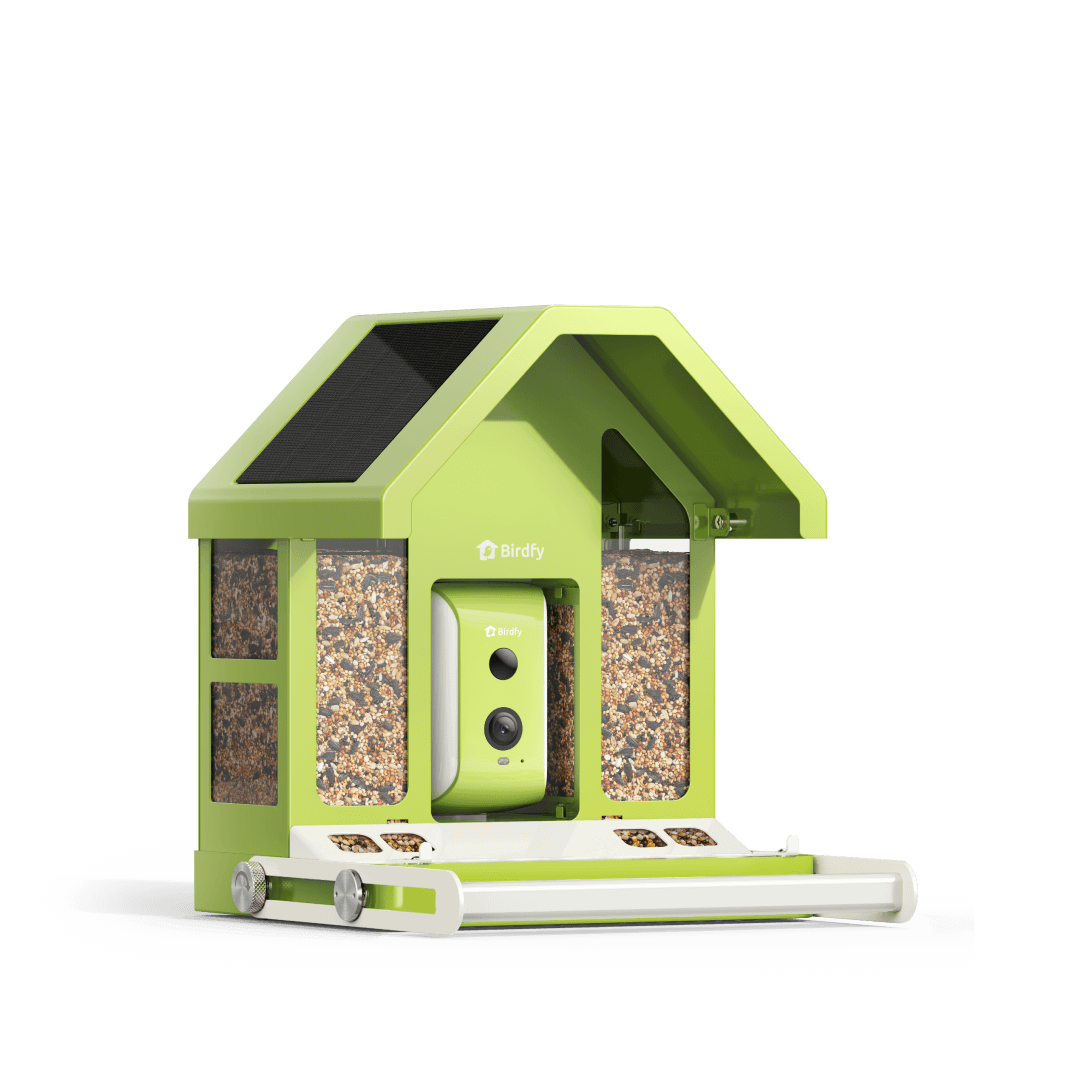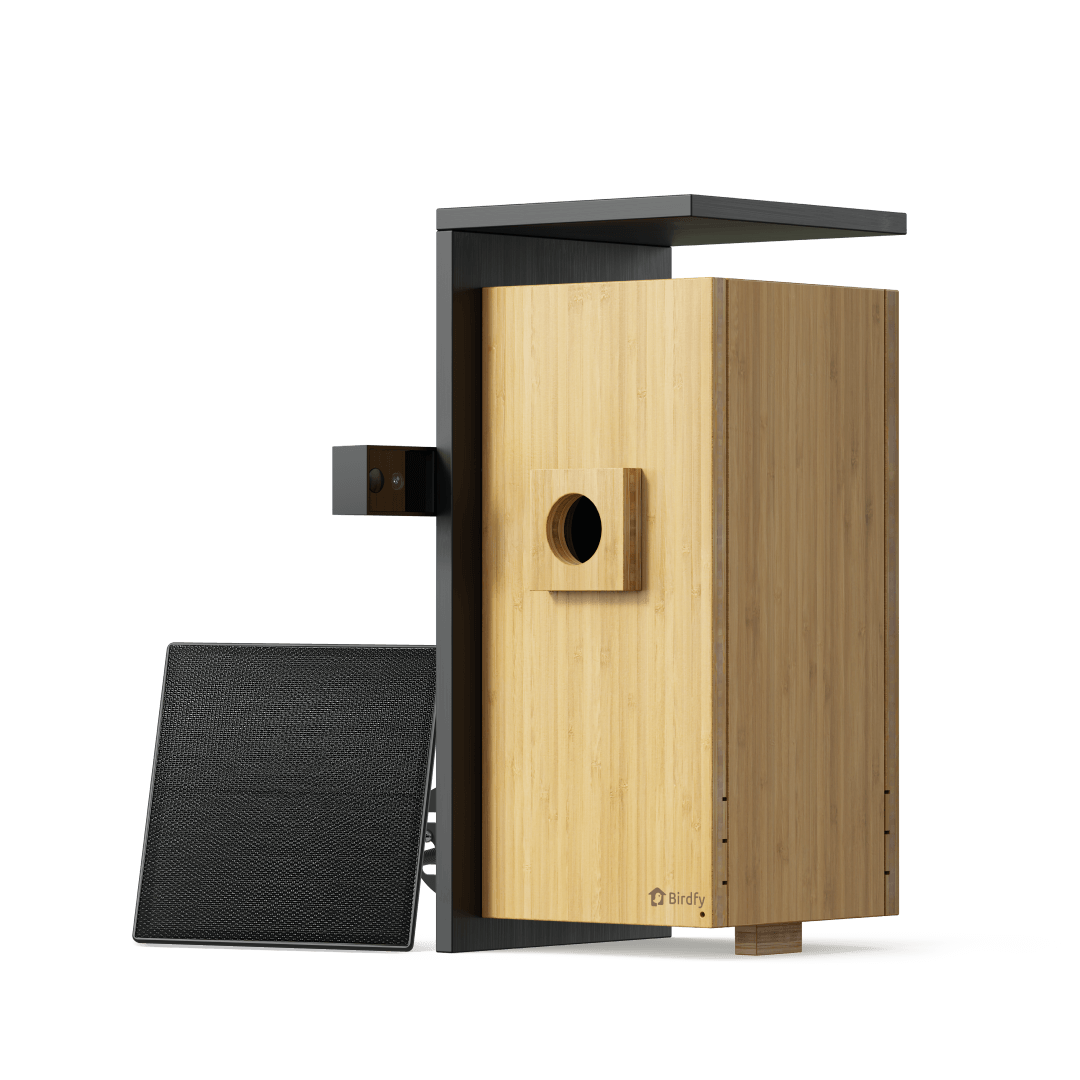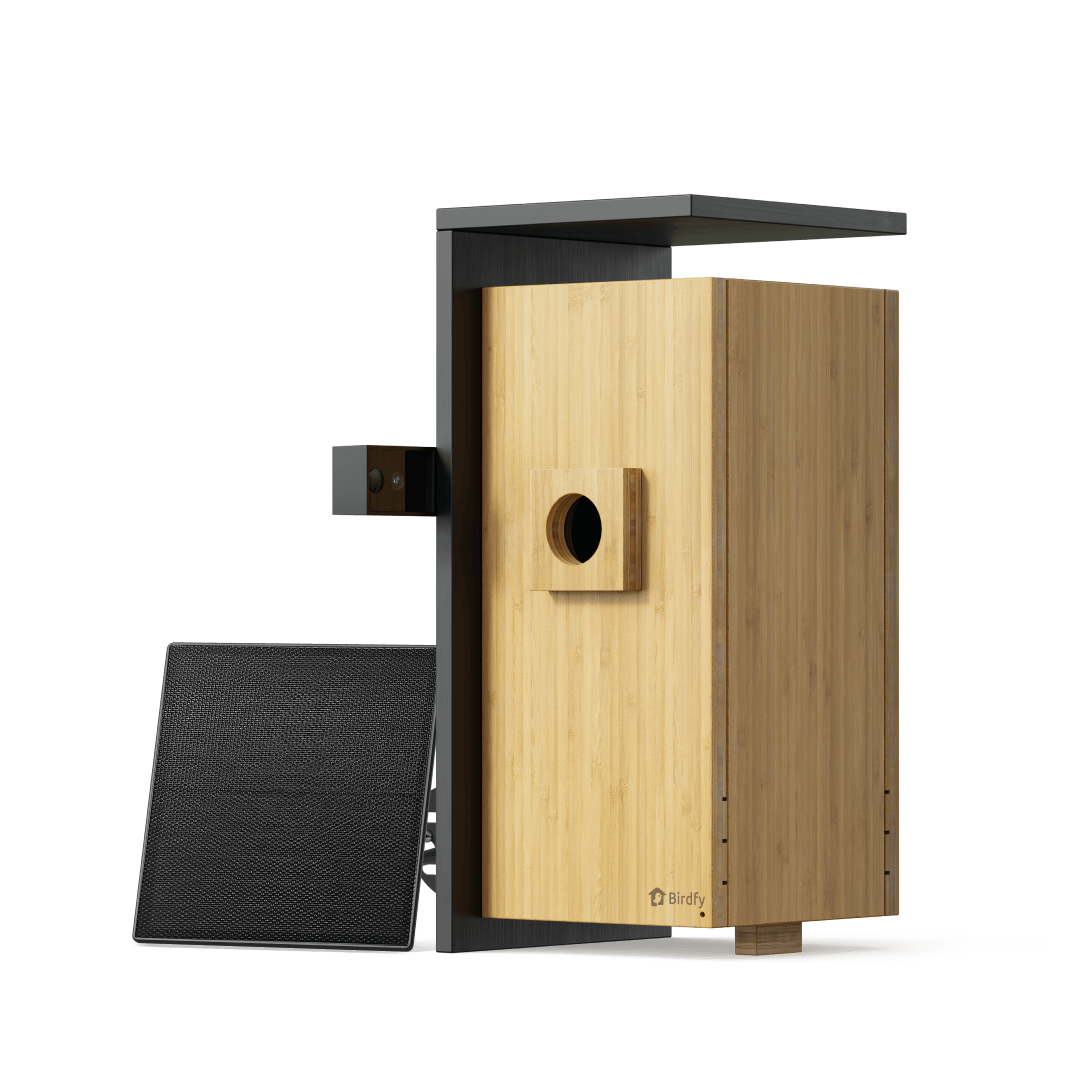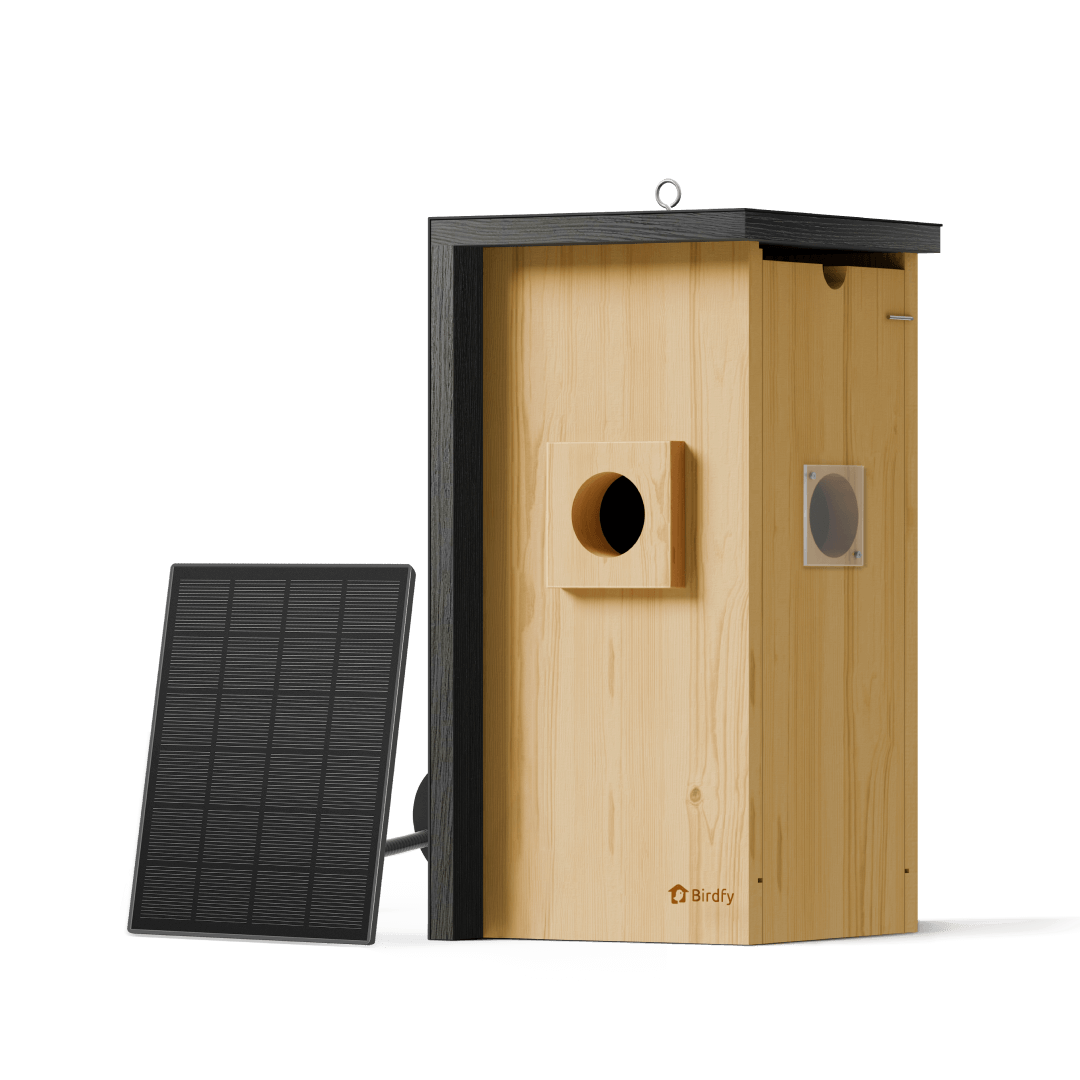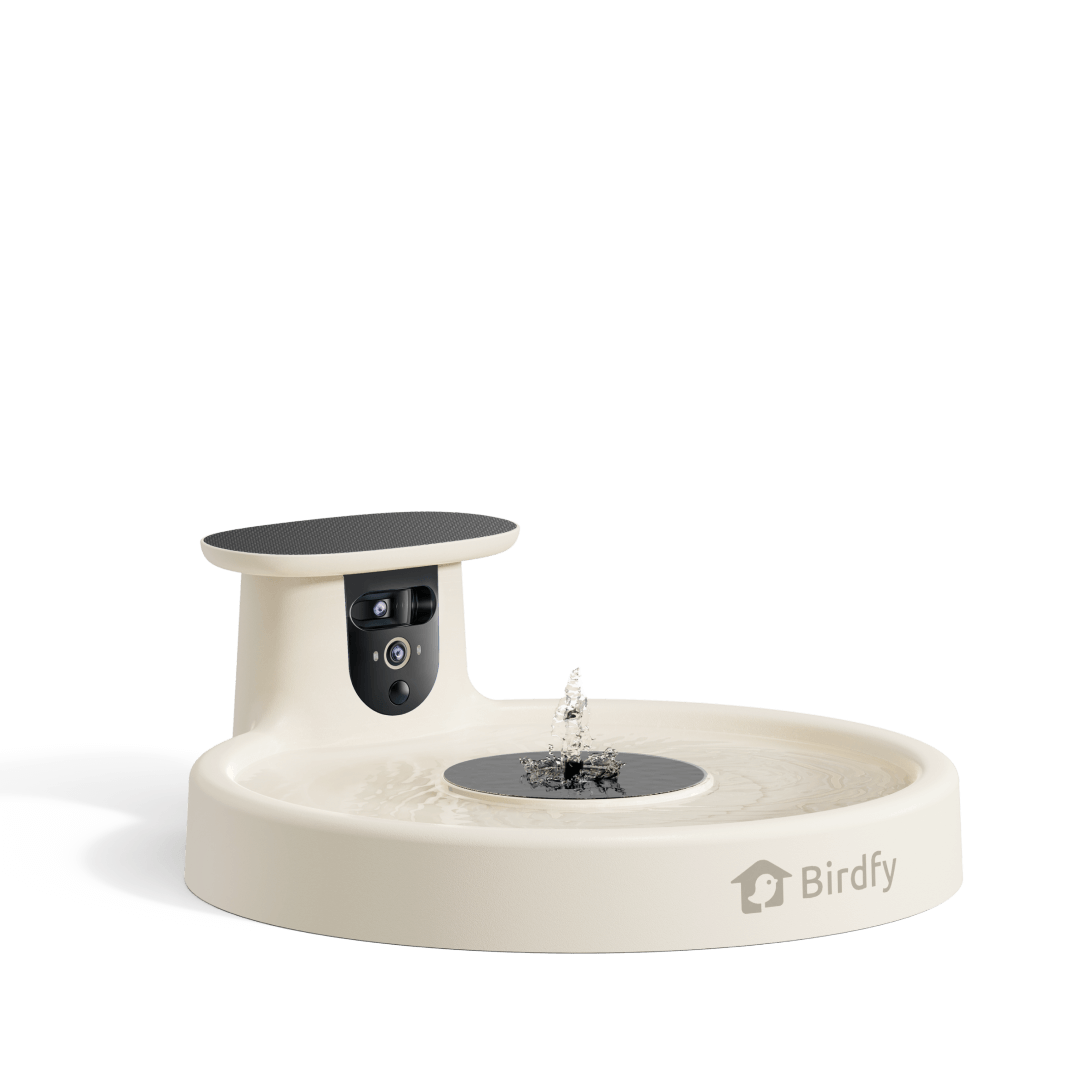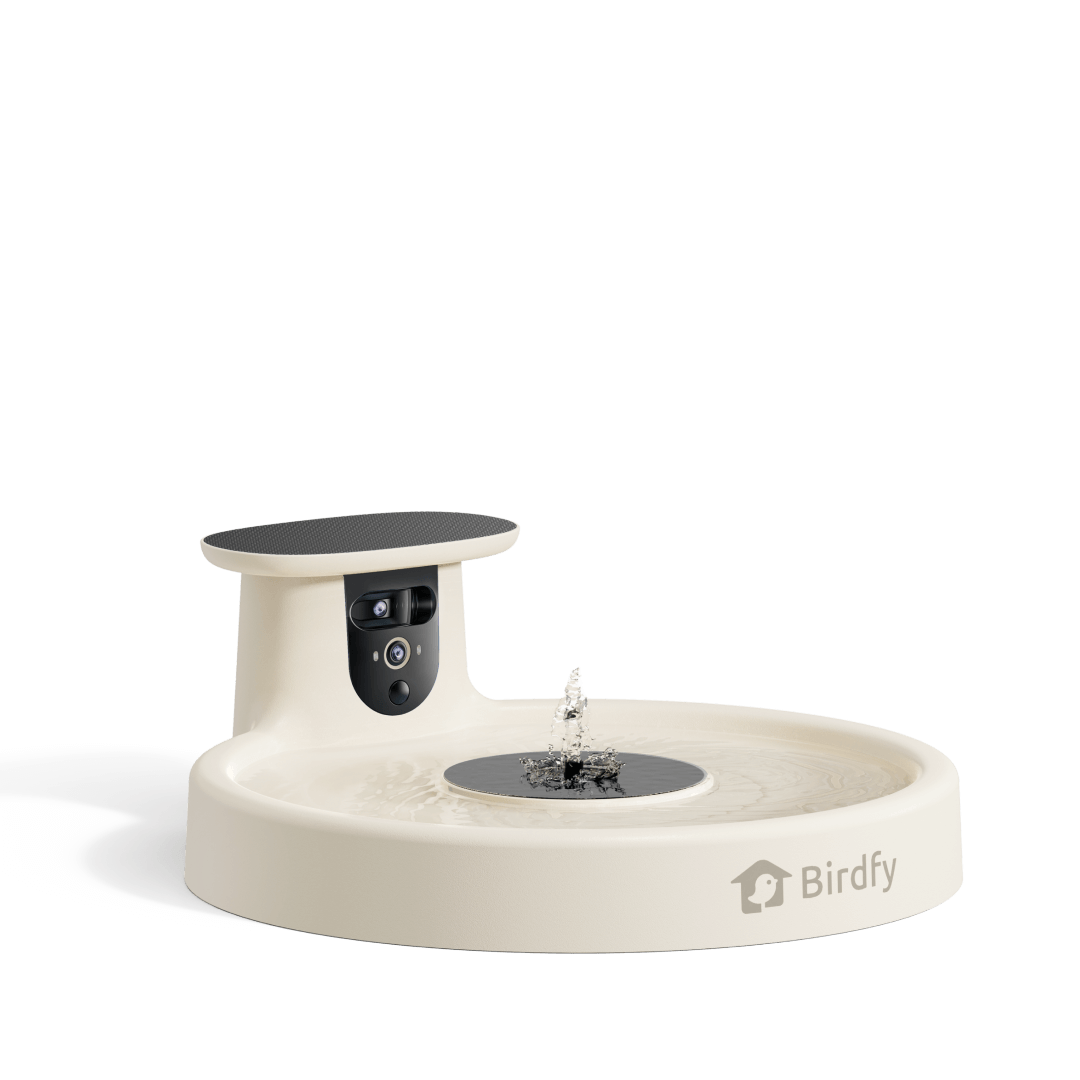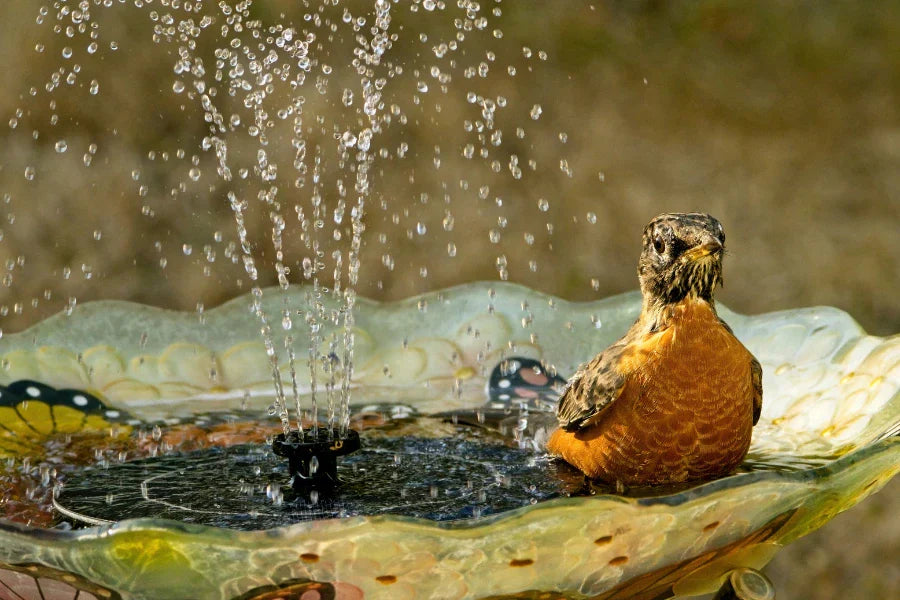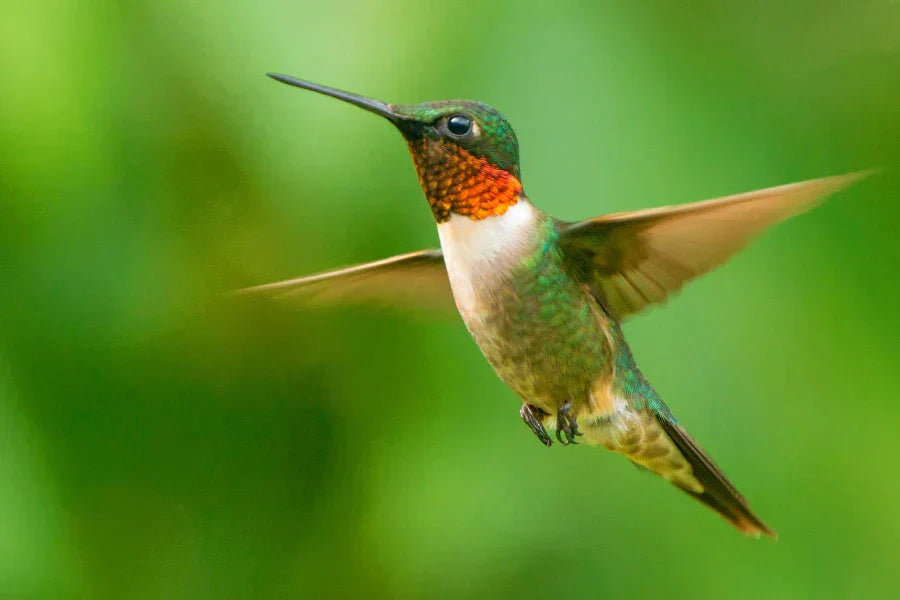Why Hummingbirds Are So Territorial And How To Solve Territorial Problems At Your Feeders
Their vivid colors and quick flight distinguish them as fascinating bird hummingbirds, but they also have territorial solid feelings. This tendency, particularly near feeders, can provoke violent arguments between them, causing you to wonder why such small birds are so fiercely competitive.
The need to safeguard essential food supplies, particularly during migration or mating seasons, is what essentially motivates their territorial behavior. A calm setting where several birds may coexist and enjoy your garden can be created by comprehending why hummingbirds are so protective of their territory and understanding how to reduce confrontations at your feeders.
I. Why Are Hummingbirds So Territorial?
Introduction
Hummingbirds are fascinating birds noted for their ability, brilliant plumage, and high-pitched flight. However, anyone who has put a feeder for them may have realized something else about them — they are very defensive. Despite their size, some quite ferocious ones may chase people or other birds away from an area they seem to consider their feeding zone. Why do hummingbirds get aggressive, and what can we do to assist in reducing these confrontations on our feeders?
Overview Of Territorial Behavior In Birds
It is important to note that territorial behavior is not restricted to hummingbirds only. Individuals of many avian species guard certain territories where food is gathered and young are reared. In this way, a bird checks the availability of its food and guarantees its safety so that the bird is capable of existing and bringing its offspring to maturity.
Hummingbirds' Strong Territorial Tendencies Around Feeders
Of territorial birds, there are none quite like hummingbirds. Even these small-sized birds are exceptionally aggressive when defending their territories, especially feeders. Have you ever watched how one hummingbird protects the others from a feeder? It acts rather aggressively, and it flies right at the intruders.
Key Factors Affecting Their Territorial Behavior: Time Of Year, Food Availability, And Migration
The types and frequency of hummingbird territorial behavior shift based on several conditions. Key elements that influence this behavior include:
- Time of Year: Breeding season and migratory periods play a significant role in the territorial activity observed in the respective species. In these periods, food demand rises, and the untamed frequency of birds and more aggressiveness are observed.
- Food Availability: These birds are also more likely to defend a feeder if food is plenty to counteract each other. However, in situations where there is little food, they will rely on their instinct and grow like beasts, and they become more interested in feeding without having to expend energy on fighting.
- Migration: Like other bird species, as these birds move towards migration, their focus alters, as does their behavior toward other birds. Due to this shift, they can no longer meet naturally at feeders.
Section 1: Territorial Behavior During The Breeding Season
Here is the explanation of territoriality in birds during the breeding season.
Breeding birds are very territorial because they know that during the breeding season, they should be able to gather enough food for both themselves and the young ones they will hatch. This means chasing off rivals and guarding flowers or other feeders for hummingbirds when the bird or plants provide a steady and consistent food source.
Why Hummingbirds Stake Out Their Areas To Ensure Enough Food For Their Offspring
In the breeding season, a female hummingbird has to have a territory with food to feed her young once she produces eggs. The territorial claim is another way of humming that ensures she has the resources to produce eggs and feed her nestlings. Similarly, males pursue territoriality to gain access to females and to display their prowess and health.
Example Of Hummingbirds Fighting To Dominate Feeders During This Period
If you have ever observed the behavior of birds at a hummingbird feeder in early spring and over the early summer, these little birds can be observed struggling with each other, vocalizing, or in high-speed mad chases. These battles are all part of their attempts to secure territory and thus food resources during their time of high energy demands to breed. At this time, you may witness one or several birds persistently chasing other birds away from a feeder and furiously defending it.
Section 2: Hummingbird Territoriality Based On Food Availability
Now, let's learn how the abundance or scarcity of food influences hummingbird behavior.
Accessibility to food largely determines the behavior of these small but fascinating birds. The two resources the birds readily feed are flowers and feeders, whose availability denotes more energy, which is used in fighting over the area since they can afford it. However, it may be different when food security becomes a vice. Unlike wasting energy at loggerheads, they complement each other by feeding with the hunger of a wolf.
When Food Is Plentiful: Hummingbirds Have The Energy To Fight Over Territory
Hummingbirds are not shy about spending a lot of energy getting to a good place where plenty of food sources are available. Males can be aggressive during territorial defense rituals, including chasing, diving, and sometimes even fighting.
When Food Is Scarce: Focus Shifts From Fighting To Feeding Efficiently
Feeding competition becomes less intense for the same reason when flowers are scarce due to droughts or other undistinguishable reasons. Such struggles deny any possibility of conventional warfare and, instead, turn to mere survival. These birds don't value chasing other birds of the same species away as much as they value eating as quickly as possible to save energy. It can also lead to reduced aggression in the defence of the territories and increased sharing of the same resources. This territorial behavior is often seen when there are few birds competing for food.
Section 3: Territoriality During Migration
This section will focus on how territorial behavior changes during migration.
These birds are not just passive; migration is stressful for them. Mating occurs during warm months, and the female needs to store fat to support this long trip, which may cover hundreds or thousands of kilometers. At this time, feeder territories can undergo several modifications.
As Migration Nears, Birds Cannot Afford To Waste Energy Fighting.
With the onset of migration season, there is a change of tide as far as the priorities of hummingbirds are concerned. Their energy needs become so profound that they cannot even spare energy or time for fights over territories. They don't devote efforts to guarding a feeder; instead, they concern themselves with feeding as much as possible so that they can stock up on what will be needed when moving.
The Shift From Aggressive Guarding To Sharing Feeders, Especially In Late Summer And Early Fall
There will be more chance of sharing the feeders with the hummingbirds in the late summer to early fall season. Food gathering and preparation for migration are more critical than food protection and defense. This means that you may find them gang up to chase away the intruder, or there will be more than one bird at the feeding trough at a time.
Section 4: Impact Of Location On Territorial Behavior
Now let's learn about how the location of your home affects the number of hummingbirds you might see.
It has also been discovered that the area of your place of residence determines the territorial disposition of hummingbirds. Considering the zones of urban or suburban areas and the rural regions with diverse environments and different feeding choices, the number of birds and their activity towards the feeders are impacted.
Urban Areas: Fewer Birds, Less Aggressive Behavior
An example of this is that you will find fewer numbers compared to places where flowers are more abundant in urban areas where there are far fewer natural food sources for the birds. For the same reasons, as compared to the feeding time, there are not too many birds that would fight for territories. There's the possibility of noticing more separate birds visiting your feeder and not quarreling.
Rural Areas And Migration Routes: More Birds, Higher Chance Of Observing Territorial Fights And Sharing Behavior
Often, in the districts within rural settings or in paths that many migratory species follow, one can spot several hummingbirds, most especially during this season of migration. In such places, there are likely to be territorial incidences because several birds are likely to compete for the same resources. But even as the migration draws nearer, more birds may use the same feeders, even as they lose their territorial behavior to feed more for a long trip.
II. How To Solve Hummingbird Territorial Problems?
First, you need to get an overview of hummingbird territoriality and aggression. As these birds are fiercely territorial creatures, Hummingbirds exhibit strong territorial behavior around feeders. Their high energy needs result from their regular nectar consumption, which powers their quick metabolism. Territoriality is most visible during migration and breeding seasons when food access becomes essential for survival.
It willfully claims a dependable food supply, such as a feeder, and defends it from trespassers, even if it means putting on an aggressive show or engaging in physical combat. This conduct is more common among men, who use it to assert their authority and protect resources for future partners. By defending their feeding sites, they can guarantee a steady flow of nectar to support their vigorous flying patterns and general well-being.
This territoriality, while entertaining to see, can cause problems at feeders. Understanding the importance of protecting their territory for survival helps you create solutions to foster peaceful coexistence among hummingbirds.
Understanding Hummingbird Territorial Behavior
Comprehending hummingbird territorial behavior is essential for handling disputes at feeders. These birds defend their food supplies to guarantee survival, particularly when migrating or nesting. Their fast metabolism necessitates constant nectar, which feeds their territorial instincts and causes them to react aggressively to anyone who enters their territory.
Why Hummingbirds Become Aggressive Near Feeders
Usually, hummingbirds are active birds, and apart from that, their wing beats and continuous flying cause them to need to feed very often. Due to their high energy requirements, they are bound to defend their food sources. They can become territorial around feeders mainly because they consider all other birds their rivals for the nectar they require. At feeders, territorial behavior is seen through acts such as chasing other birds, diving on them, or hovering angrily.
How Having Only One Feeder Leads To Territorial Conflicts
If the feeder is singular, it becomes an essential focus in the territory of a hummingbird. The crow will guard it fiercely; other crows feeding will be chased away regardless of the danger they face. Having only one feeding station with one feeder in front of it enables the bird to check on her rivals and chase them away conveniently. The arrangement results in territorial behaviors as it only means the bird has to defend the only food source.
The Impact Of Limited Nectar Sources On Territorial Aggression
When natural sources of nectar, such as flowers, appear scarce in an area, territorialism is even more evident. Being small and revolving around flowers, hummingbirds consume little energy but can't tame and feed simultaneously when there's no food. If there are few, if any, sources of nectar around, a bird will fight for what is available, which will increase violence around feeders.
Territorial Differences Between Hummingbird Species
There is variation with different degrees of territoriality across the hummingbird types. Comparing the two species may explain why some are more aggressive and give an insight into how to modify their demeanor.
Ruby-Throated Hummingbirds (East Coast) Vs. Rufous Hummingbirds (West Coast)
Two common species that seem to breed in the U.S. are the ruby-throated hummingbird, usually found in the eastern part of the country, and the rufous hummingbird, traditionally found in the western part of the United States. These are different species with different migrational behaviors, especially territoriality.
Differences In Territorial Behavior Between The Two Species
It is also important to note that Ruby-throated hummingbirds are less aggressive than the Rufous hummingbirds. Though they will still aggressively chase any chickadee away from a feeder, they will be less aggressive in terms of territoriality and will only do so within a restricted range. Regarding aggressive behavior, rufous hummingbirds are different from other species; they are more aggressive when in competition for food, especially during migration time.
Rufous Hummingbirds' Long Migration And Their Need To Dominate Feeding Areas
The rufous hummingbird is one of the migratory birds famous for covering the longest distance among bird species of the same family, traveling from Mexican regions to the Alaska territory in the summertime and migrating back in the wintertime. Due to this long journey, they must feed a lot to compensate for the energy they need. This need to secure food makes them mechanically aggressive around feeders, as they cannot spare food even for other bird species.
The Rufous Migration Journey: From Mexico To Alaska And The Need To Secure Food
The journey of Rufous hummingbirds is long, which is rather impressive. These birds travel thousands of miles and cover distances during spring to go and lay eggs in places like Alaska. They are also compelled to have several halts to replenish through feeders and flowers along the way. Their aggressive behavior during this time makes sense since it is about stockpiling enough food for the long and inactive journey.
Solutions For Managing Hummingbird Territorial Conflicts
These birds exhibit territorial behavior, and there is how to deal with this behavior around your feeders to ensure the birds do not fight much while feeding. These solutions incorporate positioning and spacing of the feeders to favor the multiple birds without struggling to eliminate aggression from the male bird.
Strategies For Arranging Multiple Feeders
Another way of minimizing foraging confrontation is by making different feeders available. This increases the availability of feed points to these birds, thus reducing the probability of one hummingbird cornering all the food. The strategy is to position feeders to help deny one bird access to all the feeders at a given time.
How Adding More Feeders Can Reduce Territorial Disputes
When you provide more feeders, hummingbirds have more options to feed themselves on rather than a particular bird engaging the rest of the feeders to itself. Many birds can feed at once when they have more access points, which helps them off aggression. The more feeders you provide, the more challenging it becomes for a single bird to defend them, thus having to share with other birds.
Tips For Placing Feeders In Front And Back Yards To Minimize Conflicts
One of the effective ways to minimize territorial conveyance issues is to arrange feeders in various parts of your compound. Putting feeders inside the front and rear yards also helps establish an array of feeding areas where one bird cannot dominate the feeders. Feeder protects an area so that the area you spread feeders all over is divided into regions that the hummingbirds can protect instead of having all birds flock to one place.
Avoid Clustering Feeders In One Area: Spread Them Out To Create Multiple Territories
It is a good idea to avoid using all your hummingbird feeders in one place because a single bird can easily keep other birds away from the feeding station. To prevent this, make sure you spread your feeders all around your compound. Scientists advise that you should ensure that you fix your feeders in a manner that you cannot see each other so that one bird will not chase all the others away from the feeders.
Keep Feeders 15-20 Feet Apart To Establish Separate Feeding Zones
Before preventing birds from landing on their feeders, attempt to position your feeders 15-20 feet apart to establish different feeding areas properly. This distance helps the formation of each feeder into its territory and the overall reduction in competition between birds. It is also important not to have the feeders too close to each other in case one overpowering bird can spy on all the feeders; this will increase the territorial instinct-related fights.
Case Study: Attracting More Hummingbirds To Your Balcony
That said, even living in a small apartment or condominium, you can still incorporate feeders and nectar on your balcony. Thankfully, you can use methods to attract multiple birds to your feeders without having them fight.
Personal Experience: Successfully Attracting Hummingbirds On A 1200 Sq. Ft. Balcony
With a well-setup of feeder placements on a 1200 square foot balcony, we could invite multiple hummingbirds at a go. At first, one bird would turn up to the feeder and chase other birds of any species away from it. Nonetheless, when we placed more feeders a little distance apart, more birds arrived, and fewer battles ensued.
Using A Strategic Feeder Layout To Prevent One Hummingbird From Monopolizing The Feeders
The solution was to learn how to set up the feeder to bring in more hummingbirds without increasing aggression. Because we placed the feeders on the two extremities of the balcony, we provided two separate feeding areas. This helped one bird not to monopolize all the feeders and other birds to come forward.
Natural Separation Of Feeders Along The Balcony To Create Distinct Territories
We also capitalized on the natural distribution of the balcony in organizing the feeders with physical barriers. To avoid aversive stimulus association, we moved one feeder close to a potted plant and the other feeder close to the railing of the balcony. This caused a natural barrier to minimize territorial confrontation so more birds could feed abundantly.
Gradually Increasing The Number Of Feeders To Attract More Hummingbirds Over Time
Years later, we added more feeders, believing that more of them would still attract more hummingbirds. This made the birds accept the sharing of the space, and there was a reduction in territorial activities as more new feeders were gradually introduced. Eventually, several birds came, and the general territorial behavior of the feeders reduced, and we then witnessed multiple birds feeding simultaneously.
Benefits Of Long-Term Feeding
The amount and frequency of the food given to the hummingbirds for a long duration may also minimize territoriality. Those pigeons that use the same feeders during different seasons may become accustomed to the presence of each other, hence little disturbance.
How Consistent Feeding Over Time Helps Hummingbirds Adapt And Reduce Fighting
When they are used to a subject that gives them steady food supplies, these birds are less likely to attack after some time. When a feeder gives nectar all the time, the birds know that there is enough food, so the guarding of the territories is done away with. When persisted, this may result in less aggressive behaviors observed at the feeding areas.
Providing A Steady Food Source Allows Hummingbirds To Tolerate Each Other More Easily
One way to minimize territorial aggression is to provide constant food availability to the birds so they don't have to compete for the food and thus have to defend the territory they have found that contains the food. By gaining the confidence that there is always food around, the hummingbirds may not be so aggressive, allowing each one to feed in peace and turn, their life may be endangered.
Conclusion: Enjoying Peaceful Hummingbird Watching
It is interesting to learn about all birds, especially the hummingbirds, but it is annoying when they begin to chase every other bird away from your feeding place. Understanding why these birds are so territorial and implementing the strategies discussed can create a more peaceful feeding environment in your yard or balcony.
1 comment
Hey this article is super helpful for my research and was wondering if I could get more information on this source such as author and date created. I would love to use this source in my project. Pls let me know, Thanks



